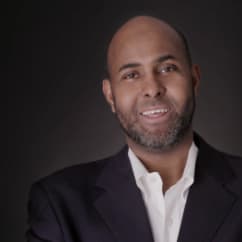Working closely with employers, NPower Canada equips young people who face social and economic barriers with the technology-focused skills they need to realize their full potential. In 2019, the GTAA – through our community investment program, the Propeller Project – committed $150,000 over three years to support NPower’s work in the communities around Toronto Pearson. We asked CEO Julia Blackburn to tell us more about the organization’s goals and the value of partnership:
The GTAA partners with us in multiple ways. We share a lot of information as we both try to understand current and future needs, then make recommendations about how we can help these young people achieve their full potential – and build stronger communities in the process.
Julia Blackburn, President and CEO, NPower Canada
 The NPower Canada program now runs in four locations across the country, three in the GTA and one in Calgary.
The NPower Canada program now runs in four locations across the country, three in the GTA and one in Calgary.
Let’s start with the big picture. How do you define the problem that NPower Canada is working to solve?

Julia Blackburn: Specifically, we tackle youth unemployment and underemployment. But the larger goal is reducing poverty. Most of the young people we work with come from low-income households. Many live in community housing. And more than 90 per cent are visible minorities, so they often face barriers from racism. Without support in accessing meaningful employment, many of these youth are going to remain in systemic poverty. We’re working to change that – through workforce development.
NPower aims not just to create social impact but to help drive the overall economy. How do you differ from other groups working in this area?
There are three things that make us unique. The first is our relationship with employers. In direct consultations and through our industry council, employers tell us about the entry-level jobs they’re trying to fill today and what skills they’re going to be looking for in the future. This allows us to be very agile in our curriculum development. And it means we’re preparing students for actual jobs. Not only in IT departments, but at banks, consulting firms – any role that requires tech skills. Accenture, for example, started out by hiring one student for an IT support desk; they’ve now employed over 70 of our graduates, many in client-facing roles.
The second thing that differentiates us is our comprehensive service for both youth and employers. We equip students with hard and soft skills, and then don’t just say, “Okay, good luck.” We match them with employers who are looking for those skills. And once graduates are hired, we follow them for five years as they build a career.
The last point is that we take a holistic approach, looking at the whole person. Many of our youth have little or no work experience. About a third are newcomers who have experience and education, but aren’t familiar with Canadian workplace culture. So we also work on professional development: how to interview, how to do a résumé and a LinkedIn profile – plus personal skills like financial literacy and maintaining a healthy lifestyle. We give them the full toolkit.
How does working with the GTAA help to further your goals?
The GTAA partners with us in multiple ways. First, as a generous contributor to our program, which is wonderful. Then, when we opened our Mississauga training centre, the Pearson community relations team helped us gain a better understanding of the neighbourhoods around the airport. That collaboration continues. We contributed to a GTAA-sponsored report on underemployment. And we share a lot of information as we both try to understand current and future needs, then make recommendations about how we can help these young people achieve their full potential – and build stronger communities in the process.
Who is eligible for the program?
Students must be 18 to 29 and face at least one of our defined barriers, which include low-income, newcomer, visible minority, LGBTQ+ community member and other factors. In general, our talent pipeline is very diverse, like the communities we serve. But because women are significantly underrepresented in tech, we work hard to recruit them. At this point over 40 per cent of the youth in our program are women, compared to about 25 per cent for the IT sector. And employers appreciate that we offer diverse candidates with the skills needed for entry-level jobs.
What other expectations do employers have?
When we first asked what they were looking for in junior employees, we assumed they’d talk about specific certifications or IT skills. But most employers lead with soft skills: “We want people who are committed, can communicate well and are able to work with a team. We assume they’re coming with basic IT skills – and we’ll teach them our platform. But they have to be curious, open-minded and willing to learn.” Many employers used to hire based on academic pedigree. Now more and more agree that what matters is potential.
And do employers see the value of working together to meet their needs?
Yes, they understand that we can’t do this in a vacuum. We have partners who help with recruitment, with training. Many employers send teams of volunteers into our classrooms. And because we’re a charity, we also need corporate financial support, along with senior leaders to serve on our board. NPower is trying to do something different in youth employment services – to be a bit cutting-edge. And that can't happen without mutually supportive partnerships all around. The GTAA gets that, because we share the same ultimate goal: creating stronger, more prosperous communities. And for NPower, that means making sure everyone has the same opportunity to succeed.









